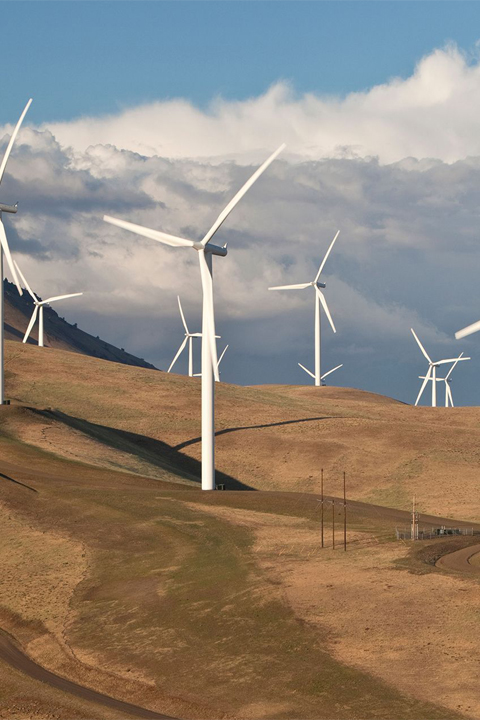چکیده
این مقاله یک مدل مبتنی بر عامل از یک شبکه برق مستقل فرضی ارائه میکند تا مشخص کند که چگونه تعرفههای ورودی و ظرفیت نصب شده نیروی باد، محاسبهشده بر حسب درصد تقاضای کل سیستم، بر مصرف برق از انرژیهای تجدیدپذیر تأثیر میگذارد. این شامل مکانیسم قیمت گذاری برق در بازار روز آینده (DAM) و بازار عدم تعادل (IM) است. حجم اضافی تولید برق از منابع انرژی تجدیدپذیر (RES-E) و انعطاف پذیری مصرف برق صنایع به عنوان ذخایر در IM ارائه می شود. پنج هزار شبیهسازی با استفاده از مدل مبتنی بر عامل برای جمعآوری دادههایی اجرا شد که سپس در مدلهای رگرسیون خطی قرار گرفتند. این امر به تعیین کمیت اثر تعرفه های خوراک و ظرفیت نصب شده نیروی بادی بر مصرف انرژی های تجدیدپذیر و قیمت های بازار کمک کرد. مصرف منابع تجدیدپذیر که به عنوان درصد کل مصرف سیستم بیان می شود، به ازای هر 10 درصد افزایش در ظرفیت نصب شده نیروگاه بادی، 8.17 درصد افزایش یافته است. شدیدترین افزایش در مصرف انرژی تجدیدپذیر زمانی مشاهده می شود که تعرفه خوراک 0.04 یورو در کیلووات ساعت برای صاحبان مزارع بادی ارائه می شود که منجر به افزایش متوسط 9.1٪ و 5.1٪ در مصرف منابع تجدیدپذیر در حالی که حداکثر ظرفیت نصب شده است. انرژی باد به ترتیب 35 و 100 درصد است. مدل رگرسیونی برای قیمتهای سالانه سد، افزایش 0.01 یورو سنت بر کیلووات ساعت را در قیمت سد به ازای هر 10 درصد افزایش در ظرفیت نیروگاه بادی نصبشده نشان داد. با هر افزایش 0.01 یورو بر کیلووات ساعت در ارزش تعرفه های خوراک، میانگین قیمت DAM در مقایسه با ارزش قبلی تعرفه خوراک کاهش می یابد. قیمت DAM تنها با افزایش ظرفیت نصب شده باد زمانی کاهش می یابد که تعرفه خوراک 0.04 €/kWh ارائه شود. این امر به این دلیل مشاهده می شود که تمام نیروی باد در DAM با قیمت بسیار ارزان معامله می شود. از این رو، هیچ حجمی از برق برای در دسترس بودن در IM ذخیره نمی شود. مدلهای رگرسیونی برای پیشبینی قیمتهای IM نشان میدهند که با هر 10 درصد افزایش در ظرفیت نصب شده نیروی بادی، قیمت IM سالانه 0.031 و 0.34 € سنت بر کیلووات ساعت کاهش مییابد، زمانی که ظرفیت نصب شده نیروی باد بین 0 تا 25 درصد است. به ترتیب بین 25 تا 100 درصد. همچنین مدلها نشان دادند که تا زمانی که حداکثر ظرفیت نصب شده نیروی باد کمتر از 25 درصد نباشد، قیمتهای IM در زمانی که ارزش تعرفه خوراک 0.01 و 0.04 €/kWh باشد افزایش مییابد، اما برای تعرفه خوراک 0.02 کاهش مییابد. و 0.03 €/kWh. هنگامی که ظرفیت نصب شده نیروی بادی بین 25 تا 100 درصد است، افزایش تعرفه های خوراک به ارزش 0.03 یورو در کیلووات ساعت منجر به کاهش میانگین قیمت IM می شود. با این حال، در 0.04 €/kWh، میانگین قیمت IM بالاتر است، که نشان میدهد که هیچ ذخایر ذخیرهسازی در IM در دسترس نیست و ذخایر گرانتر درگیر IM است. این مطالعه نتیجهگیری میکند که تأثیر افزایش ظرفیت نصبشده نیروی بادی بر افزایش مصرف انرژیهای تجدیدپذیر و کاهش قیمتهای DAM و IM بیشتر از تأثیر تعرفههای خوراک است. با این حال، تأثیر افزایش ارزش هر دو عامل بر سود تولیدکنندگان RES-E با تأسیسات ذخیرهسازی مثبت نیست، که به نیاز به قوانین و مشوقهای سفارشیشده برای تشویق مشارکت آنها در بازار و سرمایهگذاری در تأسیسات ذخیرهسازی اشاره دارد.
A b s t r a c t
This article provides an agent-based model of a hypothetical standalone electricity network to identify how the feed-in tariffs and the installed capacity of wind power, calculated in percentage of total system demand, affect the electricity consumption from renewables. It includes the mechanism of electricity pricing on the Day Ahead Market (DAM) and the Imbalance Market (IM). The extra production volumes of Electricity from Renewable Energy Sources (RES-E) and the flexibility of electrical consumption of industries is provided as reserves on the IM. Five thousand simulations were run by using the agent-based model to gather data that were then fit in linear regression models. This helped to quantify the effect of feed-in tariffs and installed capacity of wind power on the consumption from renewable energy and market prices. The consumption from renewable sources, expressed as percentage of total system consumption, increased by 8.17% for every 10% increase in installed capacity of wind power. The sharpest increase in renewable energy consumption is observed when a feed-in tariff of 0.04 €/kWh is provided to the wind farm owners, resulting in an average increase of 9.1% and 5.1% in the consumption from renewable sources while the maximum installed capacity of wind power is 35% and 100%, respectively. The regression model for the annualized DAM prices showed an increase by 0.01 €cents/kWh in the DAM prices for every 10% increase in the installed wind power capacity. With every increase of 0.01 €/kWh in the value of feed-in tariffs, the mean DAM price is lowered as compared to the previous value of the feed-in tariff. DAM prices only decrease with increasing installed wind capacity when a feed-in tariff of 0.04 €/kWh is provided. This is observed because all wind power being traded on DAM at a very cheap price. Hence, no volume of electricity is being stored for availability on IM. The regression models for predicting IM prices show that, with every 10% increase in installed capacity of wind power, the annualized IM price decreases by 0.031 and 0.34 €cents/kWh, when installed capacity of wind power is between 0 and 25%, and between 25 and 100%, respectively. The models also showed that, until the maximum installed capacity of wind power is less than 25%, the IM prices increase when the value of feed-in tariff is 0.01 and 0.04 €/kWh, but decrease for a feed-in tariff of 0.02 and 0.03 €/kWh. When installed capacity of wind power is between 25 and 100%, increasing feed-in tariffs to the value of 0.03 €/kWh result in lowering the mean IM price. However, at 0.04 €/kWh, the mean IM price is higher, showing the effect of no storage reserves being available on IM and more expensive reserves being engaged on the IM. The study concludes that the effect of increasing installed capacity of wind power is more significant on increasing consumption of renewable energy and decreasing the DAM and IM prices than the effect of feed-in tariffs. However, the effect of increasing values of both factors on the profit of RES-E producers with storage facilities is not positive, pointing to the need for customized rules and incentives to encourage their market participation and investment in storage facilities.








